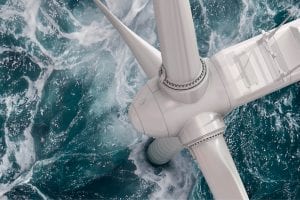Global Sustainable Equity: news and opportunities (July 2021)

Hamish Chamberlayne, Head of Global Sustainable Equities, reflects on the previous quarter of 2021 and looks ahead to the opportunities in the world of sustainability.
Key takeaways:
- The International Energy Agency anticipates that $100 trillion of investment is needed in total clean energy over the next three decades in order to transition to a net zero energy system by 2050.
- Earnings results in the first quarter of this year provided evidence that the digitalisation trend is showing no signs of slowing down as we recover from the global pandemic.
- The team’s disciplined investment framework helps them to identify the companies that are playing a positive role in the transformation of the global economy towards a more sustainable footing.
Key takeaways:
- The International Energy Agency anticipates that US$100 trillion of investment is needed in total clean energy over the next three decades in order to transition to a net zero energy system by 2050.
- Earnings results in the first quarter of this year provided evidence that the digitalisation trend is showing no signs of slowing down as we recover from the global pandemic.
- The team’s disciplined investment framework helps them to identify the companies that are playing a positive role in the transformation of the global economy towards a more sustainable footing.
The news stories dominating the headlines in the quarter were President Biden’s initiative for a minimum global corporation tax rate, a crackdown by the Chinese government on tech companies, cryptocurrency volatility, record-breaking heatwaves in the US North West, and more infectious COVID variants.
“Build Back Better”
For us, the most significant news flow in the quarter was in relation to climate action. The catchphrase to come out of the G7 meeting in Cornwall in the UK was “Build Back Better”. Central to that statement is the recognition that climate change mitigation and adaption, and protection of biodiversity, lie at the heart of achieving it. All G7 countries committed to deep emission reduction targets in the coming decade and to reach net zero carbon by 2050.
 A few weeks before the G7 summit the International Energy Agency (IEA) published a special report containing the world’s first comprehensive study of how to transition to a net zero energy system by 2050 while ensuring stable and affordable energy supplies, providing universal energy access and enabling robust economic growth. A step change in investment in clean technologies is required this decade with a fourfold increase in annual renewable energy investment and a twentyfold increase in electric car production.
A few weeks before the G7 summit the International Energy Agency (IEA) published a special report containing the world’s first comprehensive study of how to transition to a net zero energy system by 2050 while ensuring stable and affordable energy supplies, providing universal energy access and enabling robust economic growth. A step change in investment in clean technologies is required this decade with a fourfold increase in annual renewable energy investment and a twentyfold increase in electric car production.
Overall, the IEA sees a requirement for $100 trillion in total clean energy investment over the next three decades. Whether Net Zero is achievable or not by 2050, one thing is certain, we believe there is an enormous investment opportunity ahead of us. The investment logic for low carbon investing has never been stronger and we see a large and diverse opportunity set.
Information technology leads the charge once again
Having lagged for much of 2021 thus far, the information technology (IT) sector had a very strong end to the quarter as the market responded positively to Q1 earnings season. Many technology companies reported strong growth and gave positive outlooks for the remainder of the year. The digitalisation trend is showing no signs of slowing down as the global economy recovers from the global pandemic. Our overweight stance towards the IT sector was beneficial to performance but good stock selection in consumer discretionary and industrials also contributed positively.
Against this backdrop, semiconductor manufacturer Nvidia, creative software provider Adobe and water technology company Evoqua were among the biggest performers over the quarter.
Nvidia has been a well-timed new addition for us. The company has successfully positioned itself as the platform for next generation computing and its products are key to enabling its customers access the power of artificial intelligence and to improve the energy efficiency of computing. We initiated a position in Q1 after a period underperformance and since then the stock has been one of our top contributors. It reported a strong set of Q1 results with solid revenue growth and guided to much stronger than expected growth for the following quarter. Its datacentre business has been firing on all cylinders with the shift to cloud computing and the adoption of hyperscale computing and Enterprise AI may boost demand further.
 Echoing Nvidia’s story, Adobe’s Q1 results similarly showed that the digital transformation growth story is far from over. The company reported strong organic revenue growth, demonstrating that its Creative and Document Clouds were not ‘just’ COVID beneficiaries. In fact, management sees design and creativity as never having been more important, with content consumption and digital engagement “going through the roof”.
Echoing Nvidia’s story, Adobe’s Q1 results similarly showed that the digital transformation growth story is far from over. The company reported strong organic revenue growth, demonstrating that its Creative and Document Clouds were not ‘just’ COVID beneficiaries. In fact, management sees design and creativity as never having been more important, with content consumption and digital engagement “going through the roof”.
Evoqua Water Technologies was one of our industrial holdings that performed well in the quarter as management reported strong growth in its services backlog. As a leading provider of technologies for the treatment and purification of water, we believe Evoqua could benefit from multiple trends around the circular economy and water reuse and recirculation, regulations around removal of toxins in drinking water and environmental remediation. The increasing emphasis on sustainability from large corporations and the disruptive impacts of climate change on the water cycle are also driving structural growth in demand for Evoqua’s products and services.
A transformational decade for digitalisation, electrification and decarbonisation
The recent IEA report ‘Net Zero by 2050’ highlighted that electrification and increasing energy efficiency are central to decarbonisation efforts. In a sustainable future, electricity will power activities across the board, from industrial manufacturing to personal transportation, and there are a diverse set of investment opportunities associated with electrification in every economic sector. The scale and pace of required investment is staggering. Combined with the recent political commitments at the G7 meeting, this reinforces our conviction that we are standing at the beginning of a transformational decade; a decade where we make a decisive break from a fossil-analogue global economic system to an electric digital system.
Earnings results for the first quarter of this year provided evidence that the digitalisation trend is showing no signs of slowing down as we recover from the global pandemic. Digital behaviour is becoming entrenched and we see the technology sector playing a key role in transforming our societies and our relationship with the environment for the better. Digital tools and services helped our societies and economies to carry on throughout the pandemic. They have a key role to play in helping us to break the link between our economic activity and our impact on natural capital. We also note that the IT sector is leading the charge in terms of environmental impact and decarbonisation by making huge strides in energy efficiency and direct procurement of renewable energy.
So, there is little change to our outlook aside from the fact that our conviction grows. We remain focused on digitalisation, electrification and decarbonisation and this continues to drive our investment decisions and portfolio construction. Our disciplined investment framework helps us to identify the companies that are playing a positive role in the transformation of the global economy towards a more sustainable footing. We believe we will generate attractive investment returns by investing in these businesses – those with large growth opportunities, winning franchises, cultures of innovation and pricing power.
Queste sono le opinioni dell'autore al momento della pubblicazione e possono differire da quelle di altri individui/team di Janus Henderson Investors. I riferimenti a singoli titoli non costituiscono una raccomandazione all'acquisto, alla vendita o alla detenzione di un titolo, di una strategia d'investimento o di un settore di mercato e non devono essere considerati redditizi. Janus Henderson Investors, le sue affiliate o i suoi dipendenti possono avere un’esposizione nei titoli citati.
Le performance passate non sono indicative dei rendimenti futuri. Tutti i dati dei rendimenti includono sia il reddito che le plusvalenze o le eventuali perdite ma sono al lordo dei costi delle commissioni dovuti al momento dell'emissione.
Le informazioni contenute in questo articolo non devono essere intese come una guida all'investimento.
Comunicazione di Marketing.
Important information
Please read the following important information regarding funds related to this article.
- Le Azioni/Quote possono perdere valore rapidamente e normalmente implicano rischi più elevati rispetto alle obbligazioni o agli strumenti del mercato monetario. Di conseguenza il valore del proprio investimento potrebbe diminuire.
- Le azioni di società a piccola e media capitalizzazione possono presentare una maggiore volatilità rispetto a quelle di società più ampie e talvolta può essere difficile valutare o vendere tali azioni al momento e al prezzo desiderati, il che aumenta il rischio di perdite.
- Il Fondo si attiene a un approccio d’investimento sostenibile, il che potrebbe condurlo ad essere sovrappesato e/o sottopesato in alcuni settori e pertanto ad ottenere performance diverse da quelli di fondi con obiettivi analoghi, ma che non si avvalgono di criteri d’investimento sostenibile per la selezione dei titoli.
- Il Fondo potrebbe usare derivati al fine di ridurre il rischio o gestire il portafoglio in modo più efficiente. Ciò, tuttavia, comporta rischi aggiuntivi, in particolare il rischio che la controparte del derivato non adempia ai suoi obblighi contrattuali.
- Qualora il Fondo detenga attività in valute diverse da quella di base del Fondo o l'investitore detenga azioni o quote in un'altra valuta (a meno che non siano "coperte"), il valore dell'investimento potrebbe subire le oscillazioni del tasso di cambio.
- Se il Fondo, o una sua classe di azioni con copertura, intende attenuare le fluttuazioni del tasso di cambio tra una valuta e la valuta di base, la stessa strategia di copertura potrebbe generare un effetto positivo o negativo sul valore del Fondo, a causa delle differenze di tasso d’interesse a breve termine tra le due valute.
- I titoli del Fondo potrebbero diventare difficili da valutare o da vendere al prezzo e con le tempistiche desiderati, specie in condizioni di mercato estreme con il prezzo delle attività in calo, aumentando il rischio di perdite sull'investimento.
- Il Fondo potrebbe perdere denaro se una controparte con la quale il Fondo effettua scambi non fosse più intenzionata ad adempiere ai propri obblighi, o a causa di un errore o di un ritardo nei processi operativi o di una negligenza di un fornitore terzo.
- Il Fondo segue uno stile d’investimento di tipo “growth” che privilegia determinati tipi di società. Conseguentemente, il Fondo potrebbe sottoperformare o sovraperformare significativamente la media del mercato.

